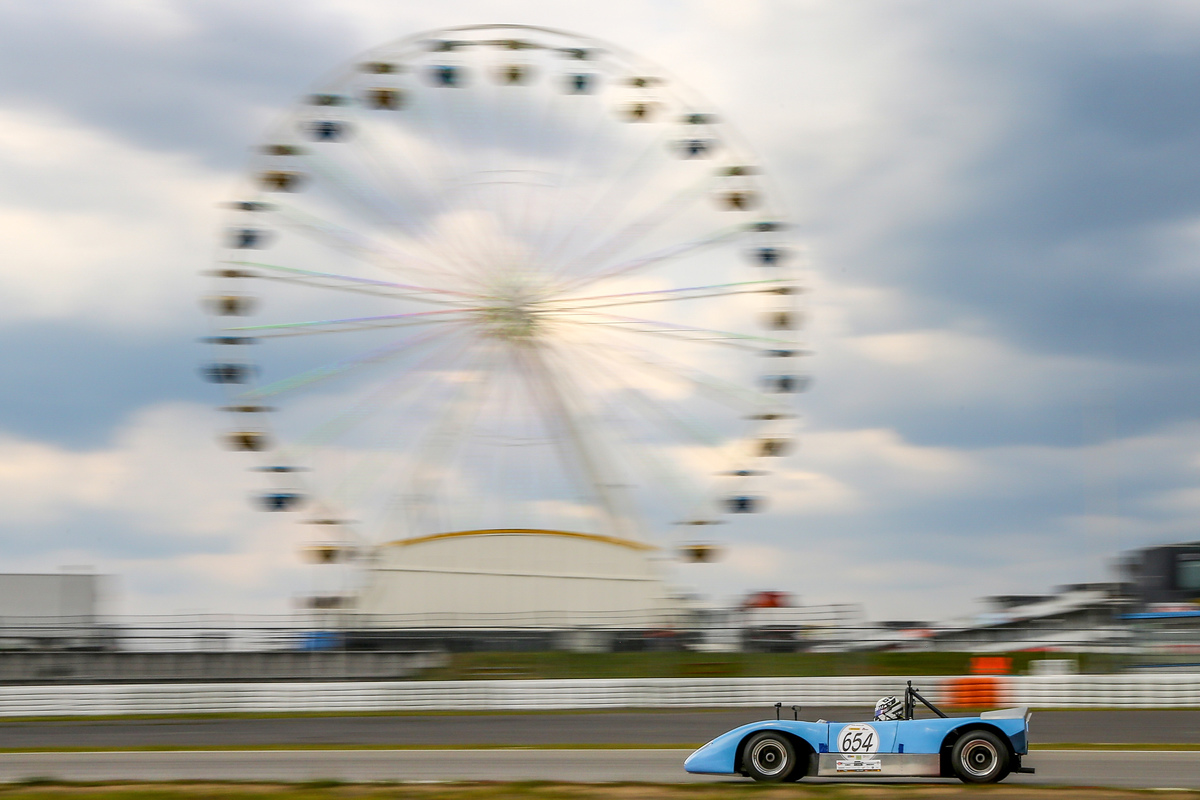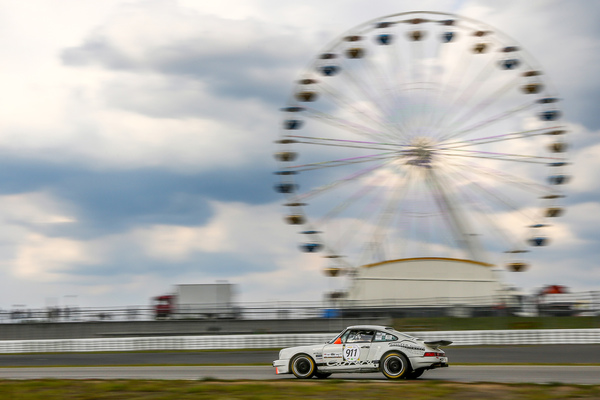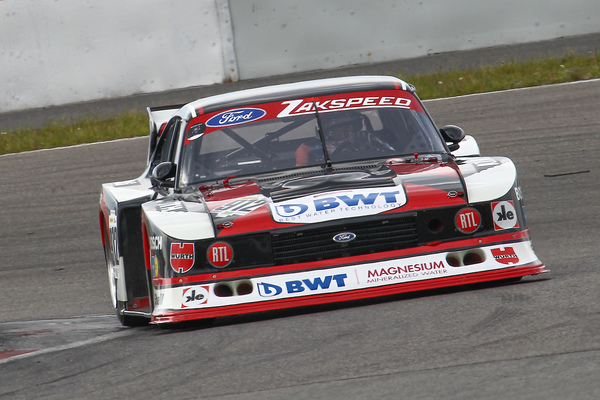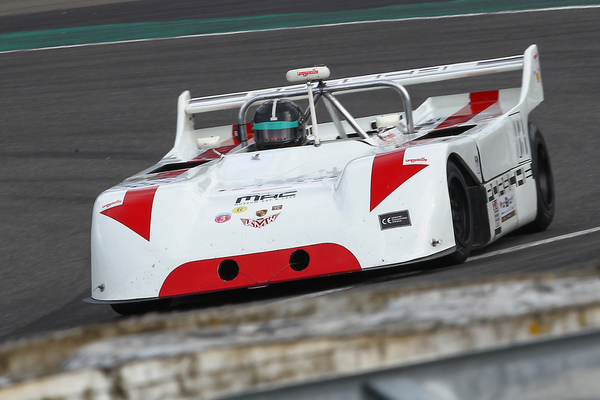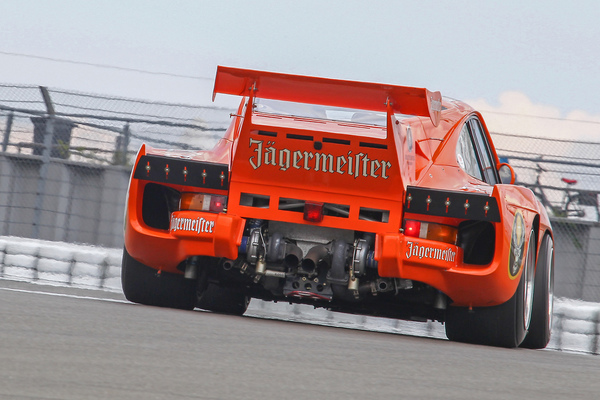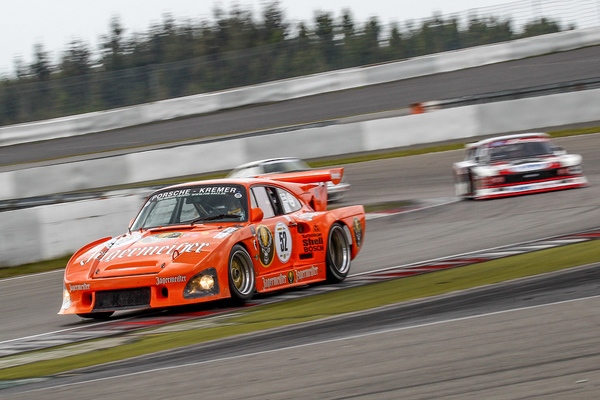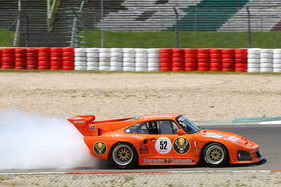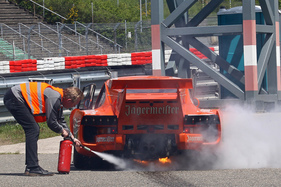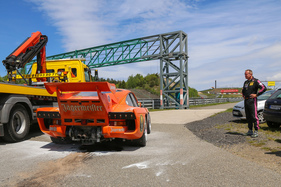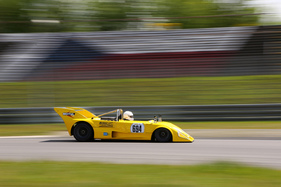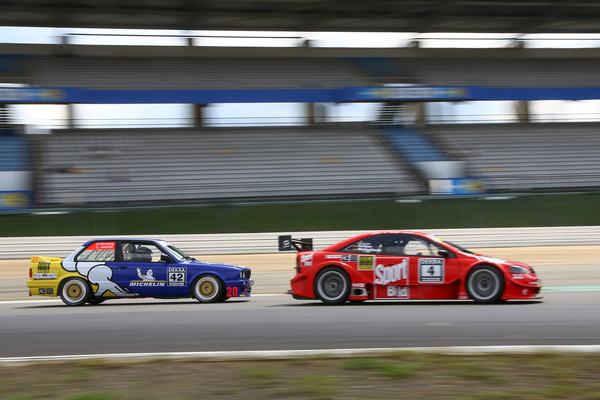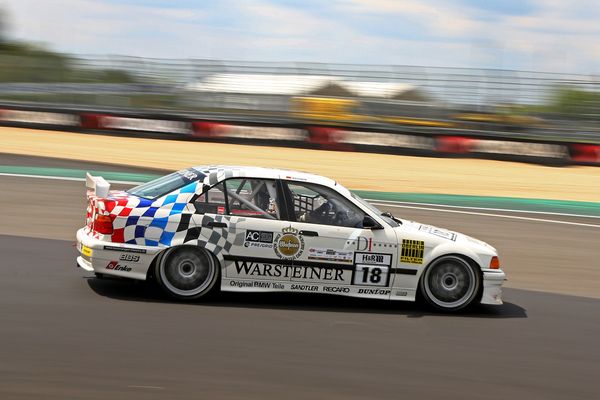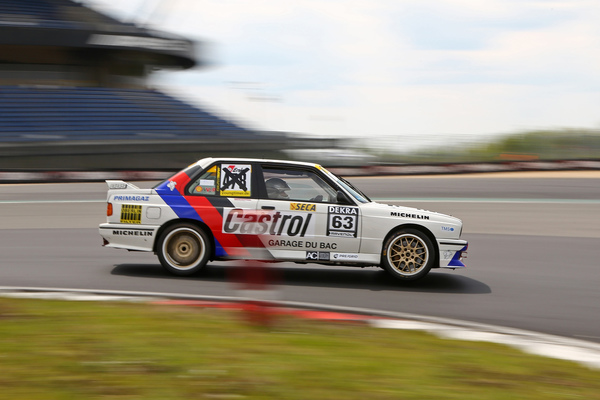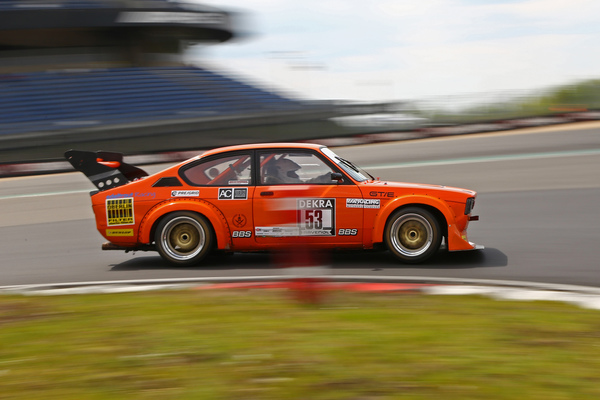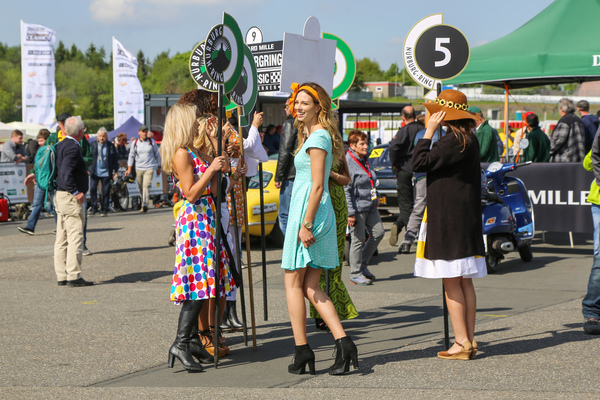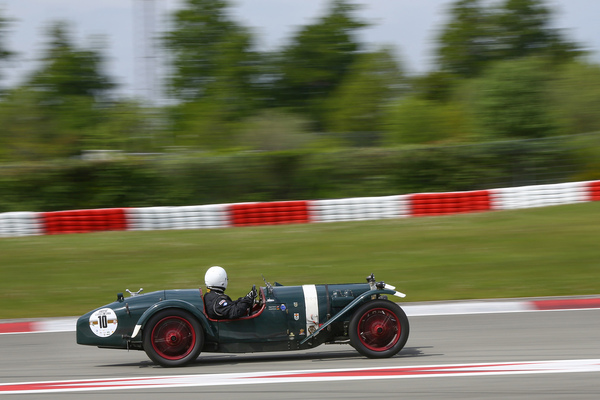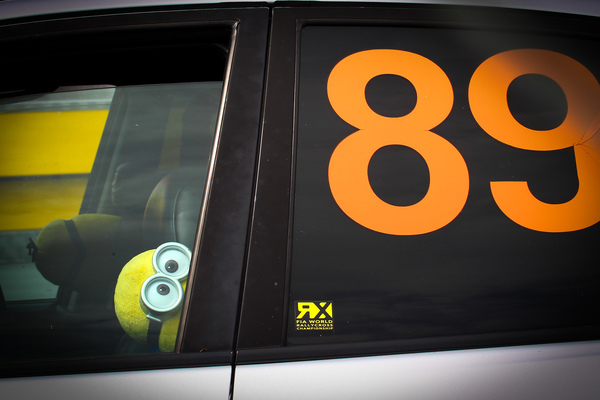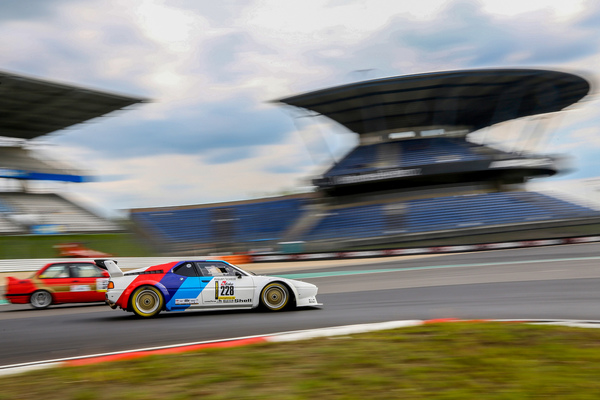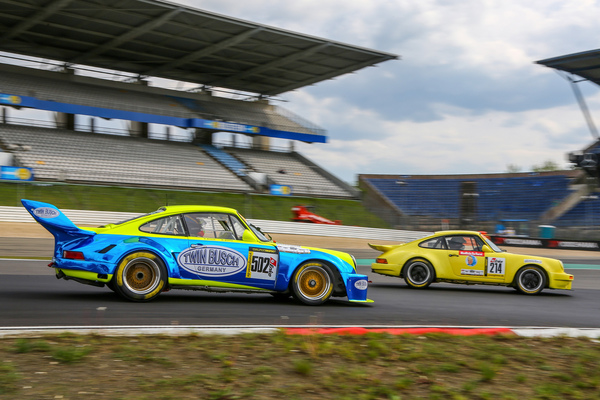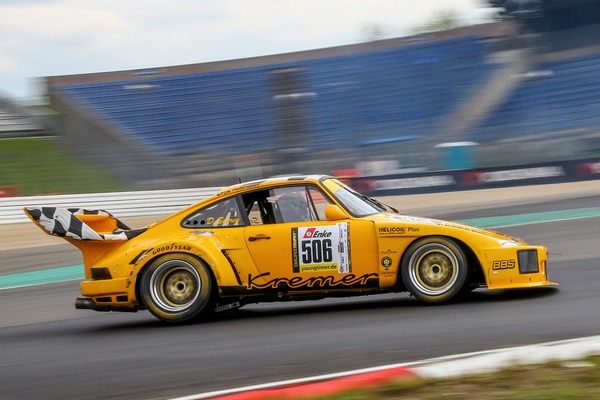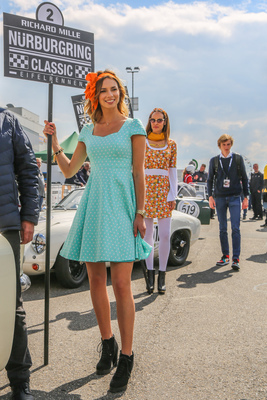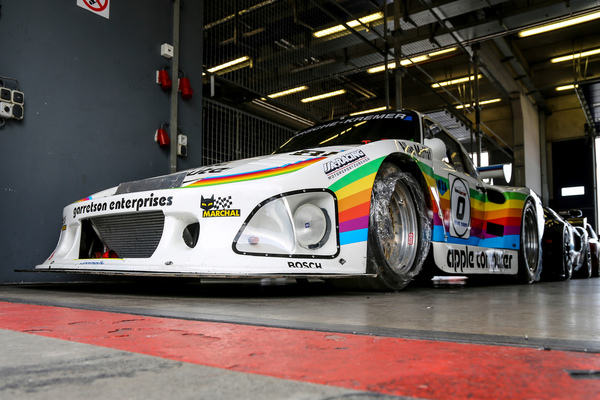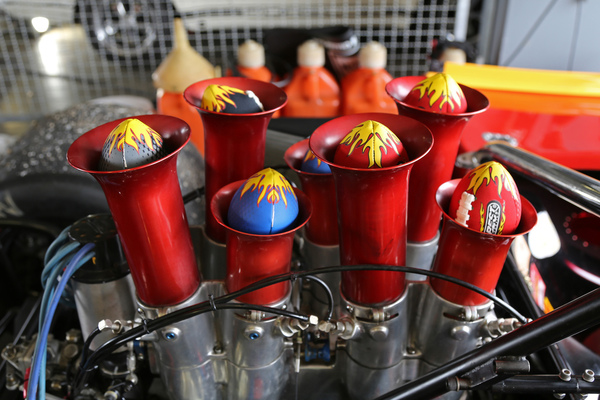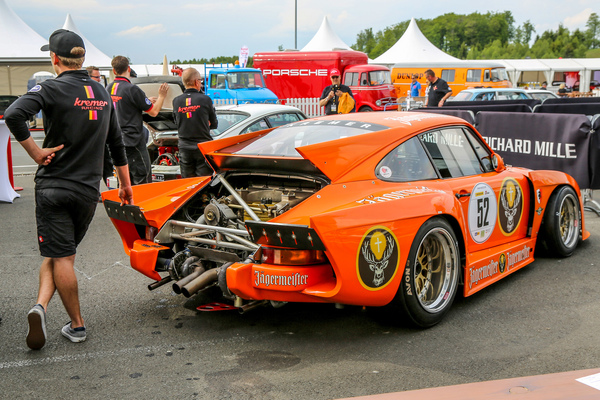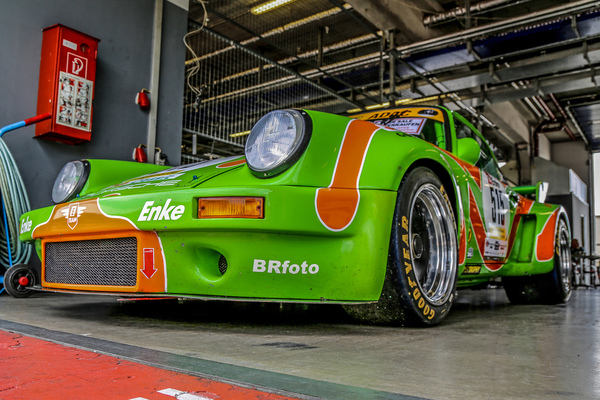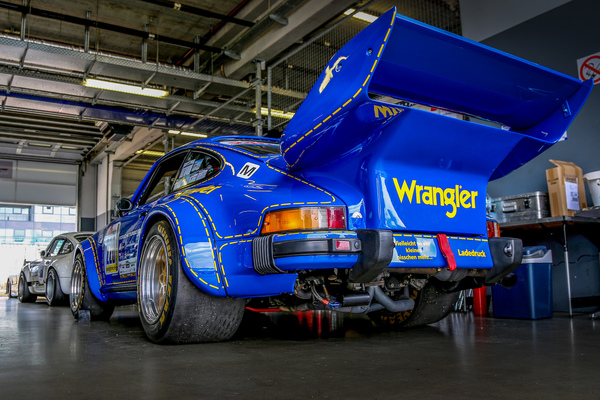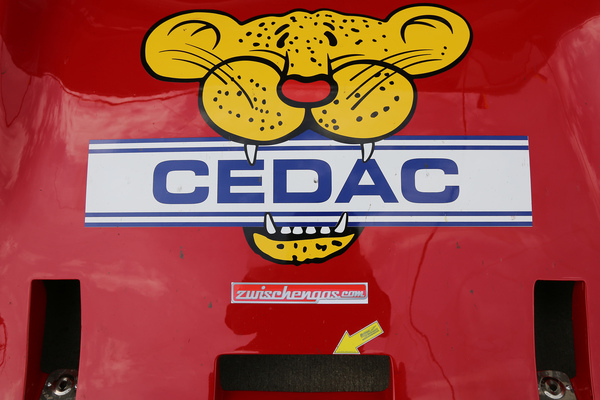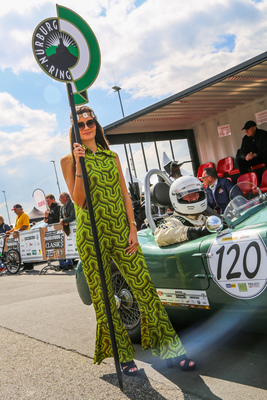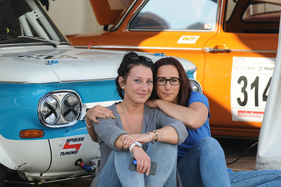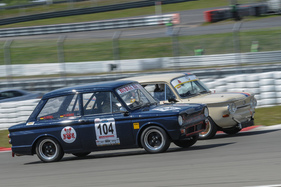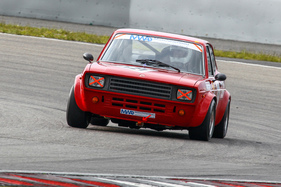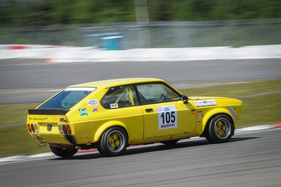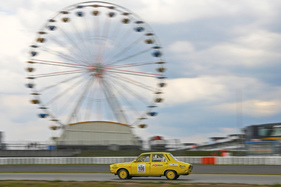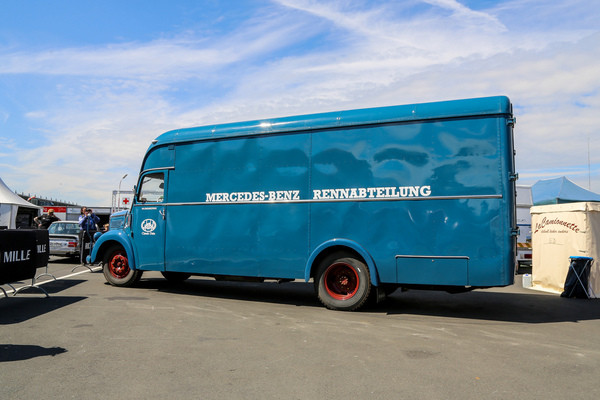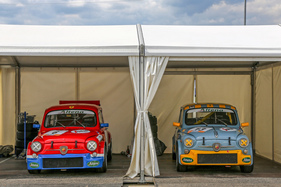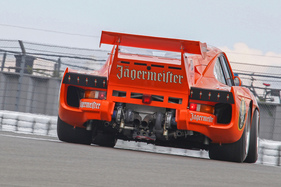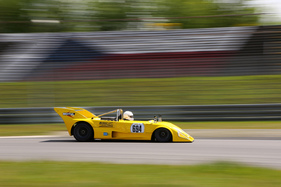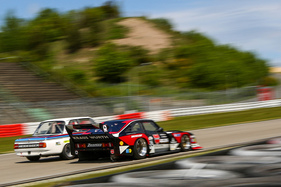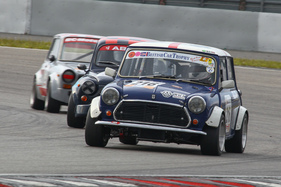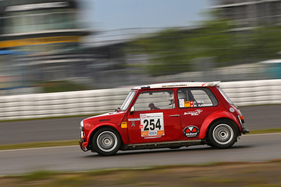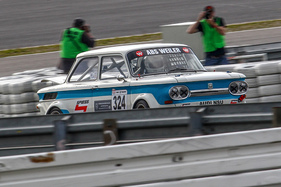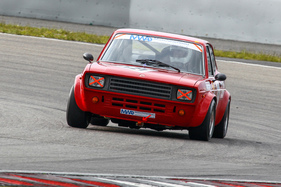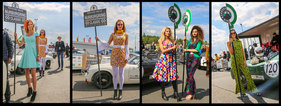The third edition of the "Nürburgring Classic" took place this year from May 24 to 26, 2019. 25 races and more than 800 teams and starters ensured a large and varied program. The weather gods also played along, because despite the worst forecasts, there was no rain and on Sunday there was even plenty of sunshine!

Despite the weather, the event was not as well attended as it deserved to be. The stands could have been better filled. At least the number of visitors increased slightly on Sunday. Incomprehensible, because there was a lot on offer. For example, admission included access to all paddocks and grid walks offered the opportunity to be a guest on the starting grid before the start and to get a taste of the racing air when the spectator gates were open on the opening straight.

One negative change from a spectator's point of view, however, was that the youngtimers no longer raced on the Nordschleife this year. Instead, the large field was split into two individual groups. This omission also caused slight displeasure among the drivers, as our discussions revealed.

The 100 Mile Trophy from FHR
GTs and racing sports cars from the seventies and eighties were used here. Group 5 cars from Kremer Racing, Kannacher and Loos visibly attracted the fans and filled the spectator stands. As was customary at the time, Group 4 and racing cars were also on the grid at the same time. The field was rounded off with V8 vehicles.

Special this year was the merging of the CanAm (Canadian-American racing series) and the FHR 100 Mile Trophy. This was very well received for the race, as without it the individual starting fields would have been a little too small. The mix of roaring CanAm prototypes and Group 5 cars from the DRM was a complete success, offering the spectators a spectacle for all the senses.
Unfortunately, the famous Jägermeister Porsche 935 K3 from the Kremer team was unable to complete the second race, as a spectacular engine failure shortly beforehand made it impossible to continue. At least the Kremer team still had a safety car in action with the road version of the 997 K3R. To commemorate the 40th anniversary of the 1979 Le Mans victory, this was wrapped in the design of the winner from back then.
Incidentally, the series is open to GTs and racing sports cars built between 1966 and 1981. The winner wins the "Eifelrennen". Fortunately, this oldest title of a race at the Nürburgring has been preserved and in 2019 the races of the "100 Miles Trophy" were given the title. It is still a reminder of the great motorsport history at the Ring and other racetracks around the world. Felix Haas took the title in both races in a Lola T294, and by a clear margin.
Touring Car Classics in Capri-Sun
In this category, the well-known vehicles from the active years of the DTM and touring cars got their money's worth. Formerly competing for prominent and well-known racing teams, the cars are now all in collectors' hands. However, they keep the cars in perfect condition so that they are always ready to race. At the Touring Car Classics, the prominent heroes of yesteryear often sit in the cockpit and fight for the best position. In the end, over 30 starters lined up at the start!
In Klaus Ludwig's former champion Capri, the 600 hp Ford Zakspeed Capri Turbo, Peter Mücke celebrated a premiere with his overall victory, as this was the first time that the driver of a Group 5 car had won a round of the Touring Car Classics! Klaus Ludwig won the overall classification of the German Racing Championship (DRM) with this ground-effect car in 1981.
The Zakspeed Capri was followed by Ronny Scheer's Opel Astra V8 Coupé DTM, the youngest car in the Touring Car Classics field. Ronny Scheer had to fight hard for second place. Thanks to an early pit stop, Achim Heinrich in the BMW M1 Procar was even able to take second place for a while. But Opel driver Scheer was able to re-establish the old order with fast lap times after his pit stop.

Behind the leading trio, the field of two-liter touring cars in the Super Touring Car Championship (STW) made for a thrilling battle.
The BMW M3 drivers also made it exciting. Michael Meyer and Stefan Piepenbrink won their class ahead of Ralph Bahr and Harald Grohs in the Vogelsang-BMW M3, the DTM car of the Essen-based driver from the 1987 season. The fastest Group A M3 team were Marc Hessel and Frank Schmickler. In the former Zakspeed car from 1987, the two former DTM drivers won the fiercely contested class and finished ninth overall ahead of Jens Böhler.

Unfortunately, the Touring Car Classics no longer exist as they did last year, because some of the series organizers had split up in the run-up to the event and set up their own series (Touring Car Legends). This is certainly one of the reasons why the last evolutionary stage of the series, namely the C-Classes and Alfas, were not at the start and the series was therefore somewhat BMW-heavy. However, this did not affect the motorsport on offer at all, the battles on offer were exciting and were also convincing in the revised TWC 2019 edition! And who knows, maybe the two "camps" will come together again so that spectators can once again see the full range on the track...
Battle of the dwarves
It's fair to say that every series that has competed at the Nürburgring Classic has had its fans. But when the "dwarves" get ready for the start, it acts like a magnet on the spectators and the grandstands visibly fill up. The racing cars with a maximum displacement of 1300cc may not have as much horsepower as their friends from the Touring Car Classics, for example, but they offer tough two or even three-way battles over the entire race distance, something that every motorsport fan will love!
For the dwarves, it's like coming home every time they travel to the time-honored race track in the Eifel. This is where it all began in 1992 with the organizer of the Nürburgring Classic, the Düsseldorfer Automobil Club (DAMC).
Anyone who wanted to see the vehicles in this series up close made a pilgrimage to the pavilions beautifully erected by the DAMC in the paddock.
An absolute record was already set in the first qualifying session: Swiss driver Gregor Nick set a record lap of 2.25.322 min on his Rover Mini, something no one had ever achieved in the entire history of the "Battle of the Dwarves".
On Saturday, there was a close battle for the top places in the first race. However, the result was the same as in practice: Gregor Nick (Rover Mini) in first place, followed by Thomas Berg (Mini) and the winner of the 1300 Histo Cup Christoph Wilde in a Simca Rallye 2. Andreas Vielgut had a retirement, which prevented him from starting in the second race on Sunday. Herbert Wein jr. did not finish either, as he was struggling with electrical problems. The fastest NSU of the day was 19-year-old Alex Schneider, who also won the NSU Trophy, while Hubert Nagl took victory in the Abarth Coppa Mille.
There was also a safety car phase in the final laps of the first race due to a lot of spilled oil in the Veedol-S, on which one or two participants spun before the marshals reacted. Gregor Nick said after the race: "One NSU suddenly blew its engine at the end, which suddenly led to wintry conditions, luckily I was able to catch my Mini, but I saw the others pirouetting in the rear-view mirror..."

The 2nd race on Sunday was very similar at the top. While places 1 and 2 went to the same starters, Christoph Wilde on Simca retired, Herbert Wein sr. on Mini was able to secure third place with his Mini and freshly fitted engine.
Man of the day, however, was Fred Abeling with his Fiat 128 Coupe. After retiring from the first race on Saturday with gearbox problems, he drove from last place on the grid to 6th place overall and was able to celebrate his victory in the 1300 Histo Cup.
The fastest NSU driver was once again the young Alex Schneide, while the second race of the weekend at the Abarth Coppa Mille was once again dominated by Hubert Nagl.
Exciting motorsport was not only on offer in the battle for the top spot, but the drivers at the back of the field also gave each other no quarter.
Special mention should be made of the Mini SPIs in Division 5, however, which drove through the Hatzenbach bend for laps on end like a string. Tight but fair motorsport with many changes of positions was visibly offered to the spectators.
AGDT - A Gentle Drivers Trophy from FHR
The racing series "A Gentle Drivers Trophy" honors a very special era of new beginnings in racing in a stylish gentlemanly manner. Shortly after the end of the Second World War, European car manufacturers were focusing on new developments and demonstrating their vehicles at international events.
The first race was won by Markus Jörg in a Lotus Eleven, while Christopher Sahl won the second race in a TVR Grantura, but only by an incredible half-second ahead of Markus Jörg!
Historic Touring Cars and Gran Turismo (HTGT) from FHR
The "Historic Touring Car and GT Trophy", or HTGT for short, is contested by touring cars, GTs and racing sports cars built up to 1971. This racing series has been contesting historic sprint races since the early 1990s. Initially advertised as HTWT (Historic Touring Car Trophy) only for touring cars built up to 1965, it opened up to GTs 17 years ago and was renamed HTGT.

The two RS Escorts of Sebastian Glaser (1st place) and Schmersal-Stursberg were unbeatable, finishing the race with a lead of over 20 seconds.
Long evening race of the FHR Dunlop Endurance Cup
Fans of endurance racing got their money's worth on Friday at 19:55 at the latest. That's when the large field of the FHR Dunlop Endurance Cup started for the 2-hour race around the Nürburgring GP circuit.
For the first time, this series started in the evening. This posed a special challenge for the drivers, not only because of the different lighting conditions compared to daytime, but also because the cars started the race with the usual lighting at the time.
23 of the 41 vehicles that started reached the finish line after two hours. Felix Haas won with a two-lap lead in his Lola T210.
It was very close further back in 5th to 8th place, where three 911s and a BMW 2002 battled it out and crossed the finish line within seconds of each other.
Incidentally, the FHR Dunlop Endurance Cup is entering its nineteenth season in 2019 and is the world's largest historic endurance series. It's just a shame that it doesn't also organize the world's longest race! This will take place in Spa in the fall, when the "Spa Six Hours" starts for a 6-hour race.
Vintage meeting and race transport meeting
The meeting for vehicles from 1910 up to and including 1949 took place in the old paddock. This is the last of its kind in the world and provided a great backdrop for the vehicles. With around 80 participants, the combination of vehicles and hall presented a magnificent picture.

At the same time, the meeting of the race transporters took place in the modern paddock. However, the effect of the cars could not fully unfold here thanks to the modern backdrop.

Youngtimer Trophy
The series celebrated its 25th birthday this year. The main focus of this series is motorsport from the seventies and eighties, whether in a small NSU TT or a Ford Escort RS 2000 - everyone is welcome.

In the first race, the Schmersal-Stursberg duo won in the Ford Escort RS1800 with the number 43, in the second race Daniel Schrey won in the yellow Kremer-Porsche 935 K1.

Many special races
A special feature of the Nürburgring Classic are the special runs, in which classic car owners without elaborately converted racing cars can also take part. "Be a racing driver for a weekend" is the call to all gentlemen drivers with classic cars.
Next year, it will once again be "Gentlemen, start your engines" when the Nürburgring Classic presents an even more spectacular program from 12 to 14 June 2020. All information can be found on their official website.
